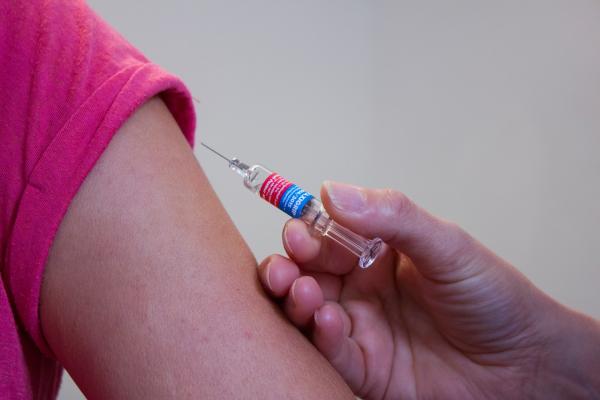During MBA school, one of my favorite courses was about operations, learning how to set up a manufacturing system, bottlenecks, throughput, parallel work lanes, and buffer zones. Operations will help us understand the real distance between vial and arm and give insight into where the bottlenecks are hidden – in time, labor, and space.
There are three steps in vaccination; registration, the vaccination itself, and a 15-minute wait to make sure there are no adverse reactions. The CDC is issuing vaccination guidelines, but it is left up to the “laboratories of democracy,” the states to implement the programs. This is a reasonable approach; after all, states and localities understand their differing needs. The downside is that this will result in a great deal of variation in how these programs work.
Registration and Appointments
One need only look at the current difficulties in Florida and Texas as “at-risk” patients lined up (in close proximity, of course) to be vaccinated or consider the lines outside urgent care centers waiting for COVID testing before scheduled appointments replaced walk-ins. Appointments reduce crowding and facilitate registration that, at a minimum, lets us know who has and has not been vaccinated. Vaccination will also require us to "register," providing basic information like our name, address, and birthdate—registration limits patients' flow requiring time for this data to be entered into our health system records.
The fastest means to automate this process are cell-phones apps, where those people waiting for vaccines can simultaneously register and make an appointment. Entering the necessary demographic information could be made even easier if you could link your registration with some data already “on-file,” say using your driver’s license, social security number, or health insurance number. The good news is that this entire process to registration and appointments can be done before you arrive for your vaccination, so it would not adversely slow patients' flow; it would, in fact, increase efficiency. The bad news is that we have yet to see any app being put forward to register people for vaccination. We need one.
The vaccination
The vaccine must be drawn from a vial and then injected into your arm. It is really the easiest moment of the whole process. It requires the nurse to validate your identity with at least two pieces of information, your name and birth date. The whole process is pretty quick, say 3 minutes, and in most cases, several nurses can be vaccinating patients at the same time. Additional people will be necessary to resupply and help move patients through the “vaccination station,” making this phase limited by the number of available workers. Figures on how many healthcare workers are declining vaccination are difficult to come by. If for no other reason, it is embarrassing that those felt to be most at risk and most knowledgeable would be hesitant. But if 30-40% of healthcare workers are not getting vaccinated, we may find that their absence slows vaccination. Some sites already have reduced hours of operation because of labor shortages.
Observation
Once you have been vaccinated, it is recommended that you be observed for 15 minutes to ensure that any severe adverse reactions can be identified and promptly managed. This step is essential. It also is the most rate-limiting component and the reason, social distancing. Each post-vaccinated participant requires roughly 115 square feet of space (the area of a six-foot circle). The faster you vaccinate, the more space you need for the fifteen minutes of observation. 4 vaccinations per hour requires only 115 square feet. Sixty vaccinations per hour, and the space required rises to 1800 square feet. The current facilities administering the vaccine are large enough to observe the newly vaccinated; they have meeting rooms and lobbies to buffer that crowd. But the neighborhood pharmacies and primary care offices do not. [1] We need to be planning on vaccinating at larger facilities. As used for COVID testing, a drive-through model will not work - you can't observe people sitting in cars.
Location
The first phase of vaccinations involved institutionalized groups – healthcare workers found in hospitals and large clinics, and ALSO in long-term care facilities. “Mass” vaccination is feasible for this group, but as we extend vaccination to "critical" workers and adults over 75, this becomes more difficult. Police, firefighters, and EMS can be vaccinated at their police stations and firehouses, making the most sense in gathering them together and having the room for observation. Grocery workers may be vaccinated at their "in-store" pharmacies. But what about those adults, 75 and older, living amongst us, in the community, not in "nursing homes?" Physician offices and neighborhood pharmacies, the logical place for these people to seek vaccination, may not have the necessary observational space.
For there to be an efficient vaccination program, we need to centralize vaccinations to large facilities – places easily accessed by cars or public transportation, where large numbers of people can be observed post-vaccination. Two sites come to mind. Schools, most of which have large auditoriums and gyms, are used for voting; this would be a good fit. Also, consider empty retail space; I drive past a vacant Toys” R” Us almost every day. That big-box warehouse could handle significant vaccination volume and has the parking to handle the suburban population.
States and localities are creating these vaccination programs on the fly – that is part of why the roll-out has been slow. It will only get worse as larger populations become eligible. We need a national means to share best-practices, and we need some experts at operational concerns that can streamline the vaccination process. That said, a vaccination app and identifying large facilities now will speed up reopening by speeding up vaccination.
[1] Guidelines call for roughly 1500 square feet of office space for the first physician and 1000 additional feet for the second physician. CVS stores run about 10-12,000 square feet, but most of that is taken up with retail sales, not empty floor space.




